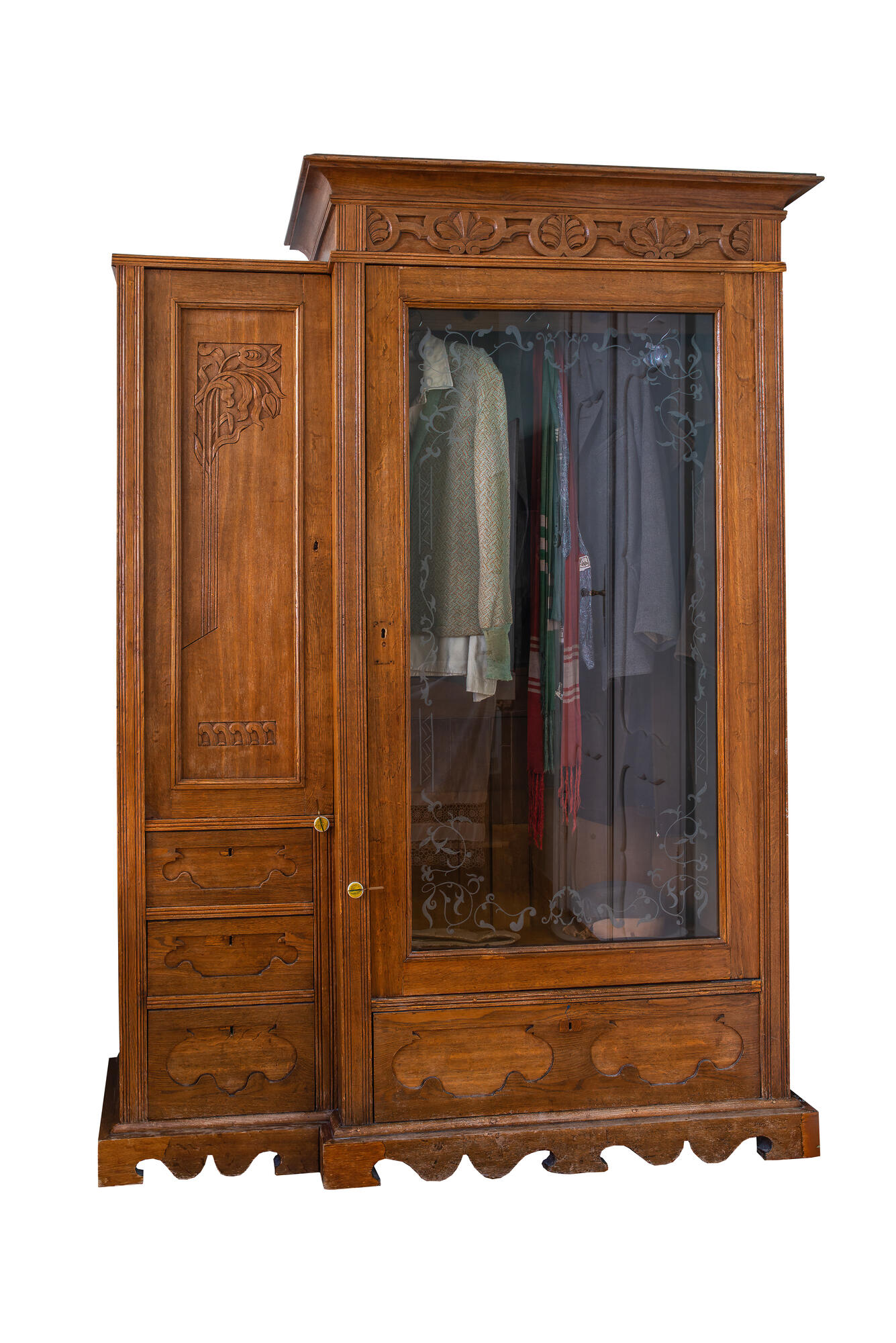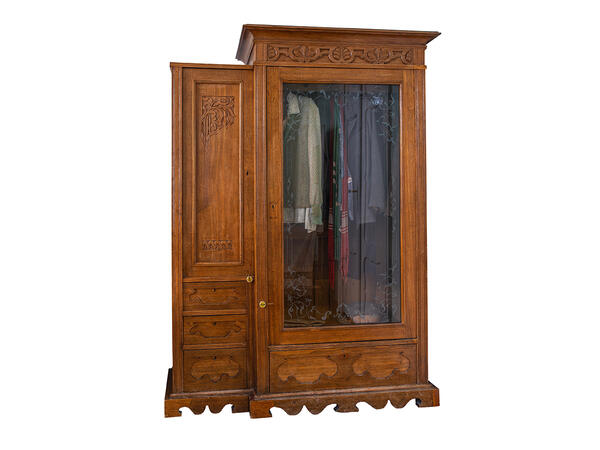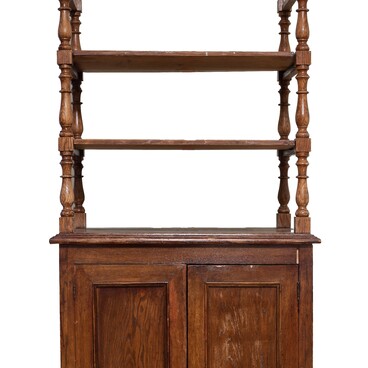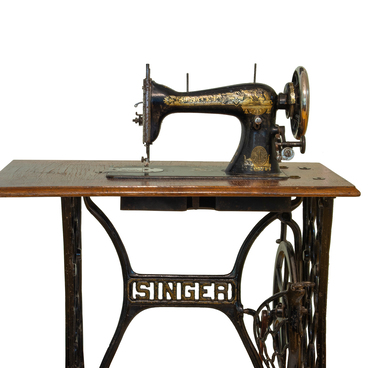The wardrobe belonged to the family of the Bashkir poet Majit Gafuri. Presumably, this piece of furniture was made at the turn of the 19-20th centuries in Moscow at the Slavyanov’s factory. People called such a wardrobe ‘Slavic’. The factory’s products were enormously popular — ‘Slavic’ wardrobe could be found almost in every home. Their production continued, in fact, until the 1950s.
It is believed that the ancestor of the first wardrobe was an ordinary chest, which over time acquired a vertical shape. Later it was equipped with several shelves and began to resemble modern wardrobes. The oldest wardrobe known to history is of Roman origin. Its image was found by scientists on a grave monument. At that time, it had opening doors and shelves on which papyrus scrolls were kept.
Over time, the wardrobes changed: for example, in the 13th century they looked like small houses with a gable roof, a cornice and pillars on both sides. Only very rich people could have such a thing in their houses. In the 17th century, cabinets with numerous drawers for papers and writing materials appeared. They were called ‘cabinets’. And the first wardrobe with glass doors was created in England a century later. Around the same time, there were secretaires that functioned as a bookcase and a desk at the same time.
For a long time wardrobes were made of precious wood and decorated with ivory, tortoiseshell plates and precious metals. Such furniture was intended for aristocratic homes.
A closet for storing things was called a ‘wardrobe’ (‘garderob’): from the French words ‘garde’ — ‘to store’ and ‘robe’ — ‘clothing’. They already looked much the same as today — behind one door of the closet there were shelves for things, and behind the other — a round crossbar with hangers for dresses and suits.
In the 20th century, when people began to live in apartment buildings in a small area, there was a need to have all things in one place. Therefore, a closet-wall appeared. The Frenchman Paul Cadovis implemented the idea of the ‘wall’ for the first time in 1945. Over time, this wardrobe has become the most common type of furniture.
It is believed that the ancestor of the first wardrobe was an ordinary chest, which over time acquired a vertical shape. Later it was equipped with several shelves and began to resemble modern wardrobes. The oldest wardrobe known to history is of Roman origin. Its image was found by scientists on a grave monument. At that time, it had opening doors and shelves on which papyrus scrolls were kept.
Over time, the wardrobes changed: for example, in the 13th century they looked like small houses with a gable roof, a cornice and pillars on both sides. Only very rich people could have such a thing in their houses. In the 17th century, cabinets with numerous drawers for papers and writing materials appeared. They were called ‘cabinets’. And the first wardrobe with glass doors was created in England a century later. Around the same time, there were secretaires that functioned as a bookcase and a desk at the same time.
For a long time wardrobes were made of precious wood and decorated with ivory, tortoiseshell plates and precious metals. Such furniture was intended for aristocratic homes.
A closet for storing things was called a ‘wardrobe’ (‘garderob’): from the French words ‘garde’ — ‘to store’ and ‘robe’ — ‘clothing’. They already looked much the same as today — behind one door of the closet there were shelves for things, and behind the other — a round crossbar with hangers for dresses and suits.
In the 20th century, when people began to live in apartment buildings in a small area, there was a need to have all things in one place. Therefore, a closet-wall appeared. The Frenchman Paul Cadovis implemented the idea of the ‘wall’ for the first time in 1945. Over time, this wardrobe has become the most common type of furniture.



